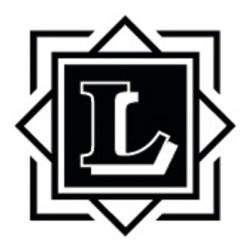Analysis
This was an appeal against a declaration that H held only 50 per cent of the beneficial interest in the property. The property was registered in the name of S, the former husband of the respondent.
H and S were childhood friends who had formed a partnership for acquiring properties together in around 1998. H claimed that in 2001 he and S had agreed that H would provide funds to S to aid S to purchase the property, to be repaid within five years. The legal ownership was to be in S’s name only but H was to be the sole beneficial owner until he was repaid in full. Two documents (‘the November 2001 agreements’) purported to record this agreement. In 2003 H registered a caution against the property supported by a statement to the effect that the beneficial interest in the properties was to be held in equal shares between S and H. In 2007 S and H signed an agreement setting out that S owed H £245,000. Later in 2007 S granted H a charge over the property to secure the sum of just over £5,000. In 2010 H obtained a default judgment against S in the sum of £300,000 and then interim and final charging orders over the property to secure the judgment debt.
In 2010, in ancillary relief proceedings, a property adjustment order was made ordering S to transfer the property to the respondent so that she could sell it, take £125,000 from the proceeds with the remainder being returned to S. In November 2011 H asserted a beneficial interest of 100 percent in the property. The respondent commenced proceedings to obtain a declaration as to H’s beneficial interest, if any, and to obtain orders removing his caution and charge to enable her to sell the property as intended by the property adjustment order.
H’s case at trial, was that S had declared himself as a trustee of the property for H. His case was principally that the trust was declared by the November 2001 agreements but he also relied upon three letters written by S.
At trial the judge held that the November 2001 agreements were not contemporaneous but had been recently created and executed and were designed to deceive the court. The judge considered that various matters were inconsistent with H having a 100 percent beneficial interest such as the statutory declaration in support of the caution, the 2007 charge and S’s form E in his divorce proceedings stating that he held the entire beneficial interest subject to a mortgage to a third party lender and H’s interim and final charging orders of 2010. The judge rejected H’s case that the three letters individually or collectively amounted to an express declaration of trust by S of his entire interest in the property in favour of H. He held that the most they did was indicate an informal agreement between S and H that monies provided by H to assist S to purchase the property would be returned within a period of time, failing which the title would be transferred to H. He held that the first letter appeared to relate to properties other than the property and in any event any trust would have been spent when the 2007 agreement was entered into between S and H which effectively dissolved their partnership. The second letter was insufficient to be a formal declaration of trust in the legal sense and the third letter amounted at most to a memorandum of a prior agreement to hold the property on trust and there was no pleaded case or evidence of that prior agreement. Further, merely using the word trust, even though S had a law degree, did not mean it was being used in its legal sense and H did not regard this as entitling him to a beneficial interest as he did not seek to protect such an interest by caution.
H appealed, contending that the judge should have held that there was a trust on the basis of the three letters. H contended that the letters contained declarations of trust, the effect of which was to give H the entire beneficial interest in the property. As to the first letter, it included the property and the judge erred in holding that the trust was spent in 2007. Matters were not finally resolved in 2007 rather there was a mere acknowledgment of S’s indebtedness. S did not go on to pay the debt and therefore matters were not fully resolved. Further the judge erred in his interpretation of the word trust. As regards the second letter, the judge erred in finding the language of trust did not support a trust. As regards the third letter, the letter did not refer to a prior agreement and there was no basis for holding that it could only be a memorandum of a prior agreement given it expressly declared that S was holding the property in trust and expressed his willingness to transfer the property. Where a person, especially a legally trained one, uses the word trust in the context of holding properties on trust, the overwhelmingly strong inference ought to be that it was intended to be used in the legal sense. Further it was impermissible to ascertain the meaning of the letters from H’s failure afterwards to protect his interest.
Held, dismissing the appeal:
- 1) The respondent’s case that the judge was entitled to reach the conclusions he reached and that was the end of the matter was incorrect. The case required the court to consider whether the judge was wrong. However in relation to any matter on which the judge was in a better position having heard the witnesses than this court to make a finding, weight should be given to his assessment. This did not mean the court was bound by his judgment and it should set it aside if found that it was clearly wrong.
- 2) Judges should test any conclusions based on oral evidence by reference to the contemporaneous documents, the parties’ motives and the inherent probabilities of the case. It seemed inherently improbable that S would have given H the entire beneficial interest in the property and this would be borne in mind in this judgment.
- 3) The November 2001 agreements did not exist when the letters were written and therefore they were not part of the factual matrix against which the court was entitled to interpret the letters.
- 4) As regards the first letter, the trust was subject to a condition subsequent that the matters between the parties were resolved. The judge had found that this occurred in 2007 in the deed of confirmation which liquidated S’s liabilities to H. It was noteworthy that the 2007 agreement contained no provision that H was entitled to the whole of the beneficial interest in the property. If he had been, it was improbable he would have taken the 2007 charge. The 2007 charged moved the burden of adducing evidence to H to rebut the suggestion that this was inconsistent with the first letter. He was unable to do that. Therefore the judge as entitled to reach the conclusion that if there was an arrangement constituted by the first letter it had come to an end by 2007 and therefore was no longer in point.
- 5) As regards the second and third letters, where the parties use the word trust, the court does not have to find a trust. The court will look at the true effect of the arrangement or document. Whilst it is likely to be correct to assume that the word has its legal meaning in a document drawn up by lawyers acting in their professional capacity, the documents in question were short letters written informally by a person acting under pressure with no professional practising qualification, even if he did have legal training. Therefore there was no compelling reason why they should be read in a technical sense as carrying all the connotations of a trust which were contended.
- 6) As regards the second letter, whilst there was a commitment to transfer the property to H if S was unable to pay what was due, this was not a description of a trust but of a charge. It was inconsistent that H should have both the property and the repayment of the debt.
- 7) As regards the third letter, it was highly significant that there was no reference to the existence of an absolute beneficial interest in the property in any event. This was totally inconsistent with the proposition that the letter created a trust.
8) Further there could be no mistaking that the second and third letters were referring to some previously made arrangement. Neither actually declared a trust. If there was a trust, it was somewhere else. If it had been created at some other point in time, it would have to have been a trust in writing setting out all the terms. No such pre-existing trust had been asserted or proved.
ARDEN LJ: [1] This is an appeal against the order dated 26 November 2013 of His Honour Judge Gerald sitting in the Central London County Court. [2] His order declares, among other things, that the appellant, whom I will call Mr Heer, holds 50 per cent only of the beneficial interest in a property known …
Continue reading "Heer v Singha [2016] EWCA Civ 424"

